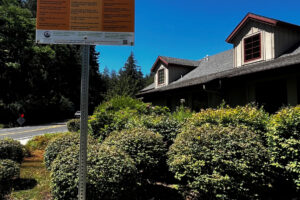Camas city leaders will soon address the issue of frequent bridge-jumping off of the Lacamas Park Trail pedestrian bridge into the lake water below.
Citizens, as well as at least one Council member, have voiced concerns about mostly young people jumping off the pedestrian bridge into a stretch of water that connects Lacamas and Round lakes.
In August 2019, a 14-year-old Vancouver boy, Anthony T. Huynh, drowned after jumping from the bridge with a group of friends.
“The bridge itself is fairly new,” Camas Police Chief Mitch Lackey told Council members at their Aug. 3 workshop meeting. “After construction, it was discovered by kids to be a kind of platform to jump off of.”
As far as water-based incidences and emergency responses, Lackey said the city’s first responders typically get more calls for accidents at the area near Round Lake known as the “Potholes.”


